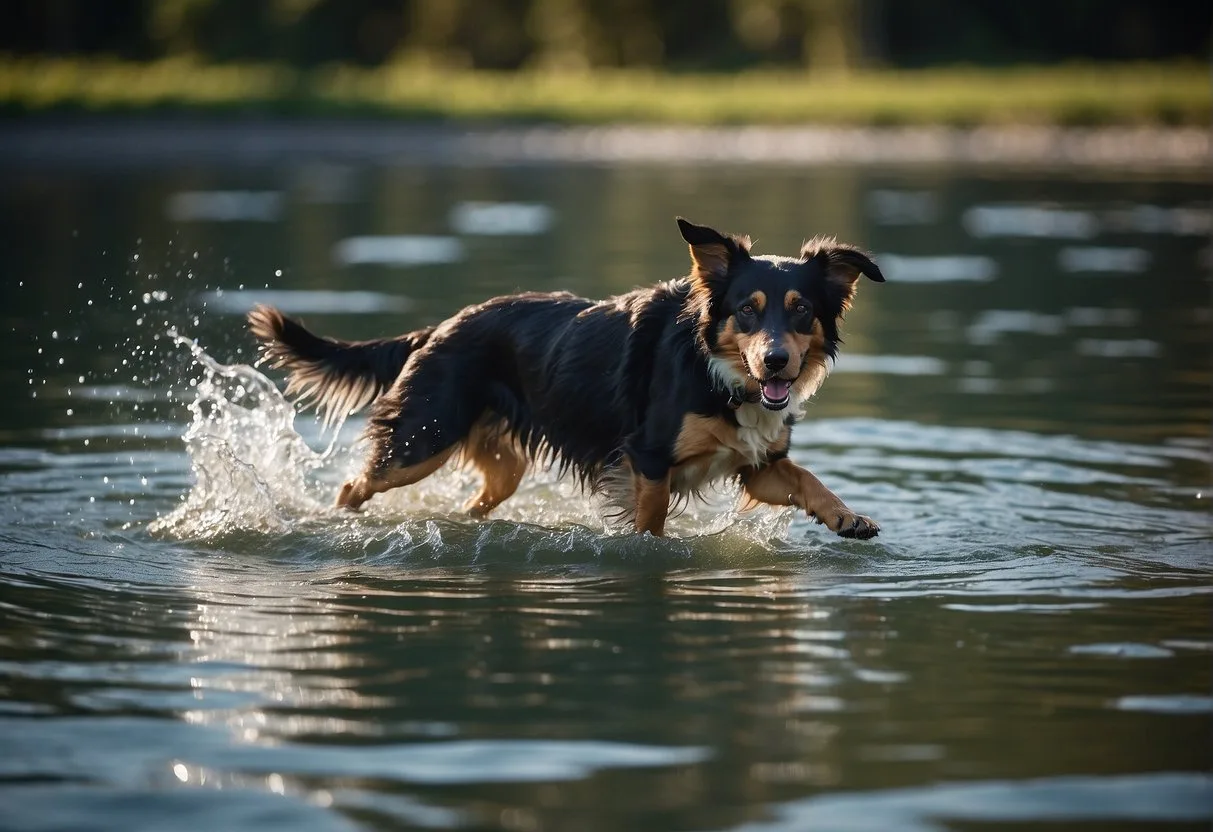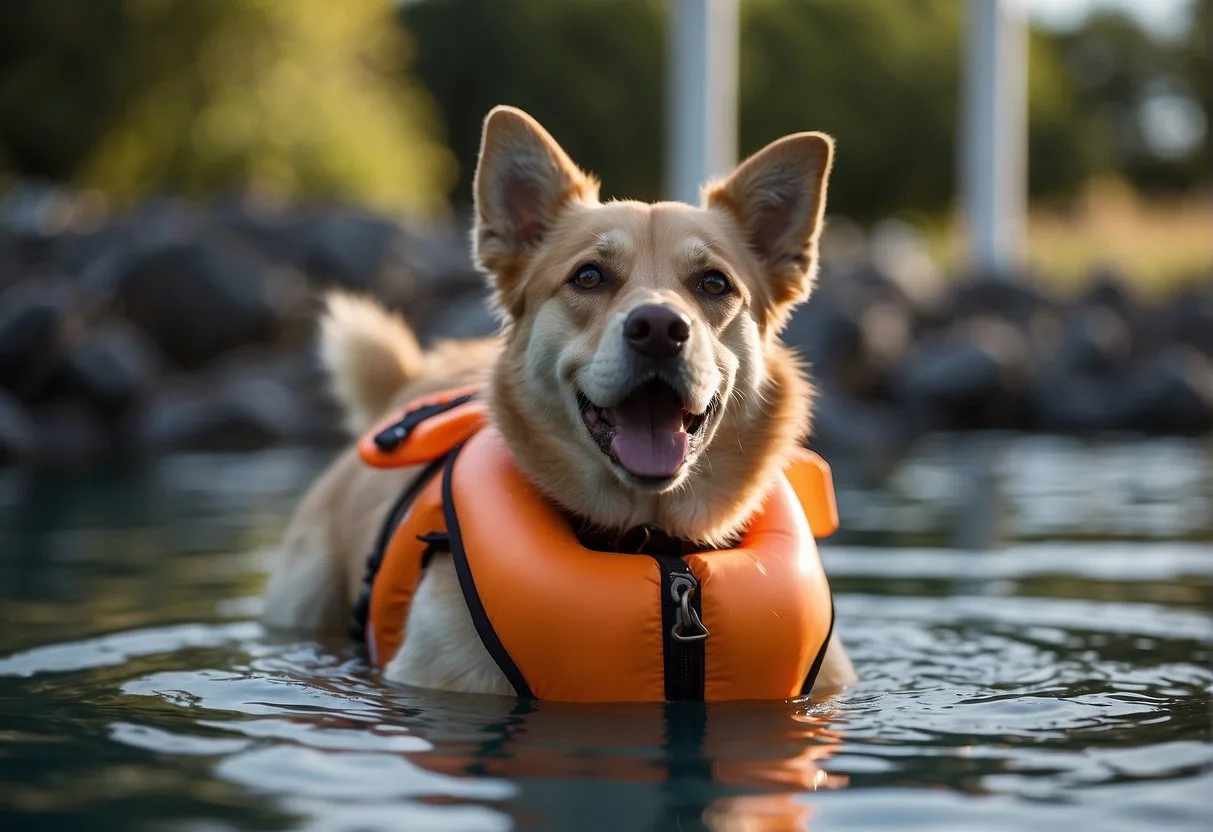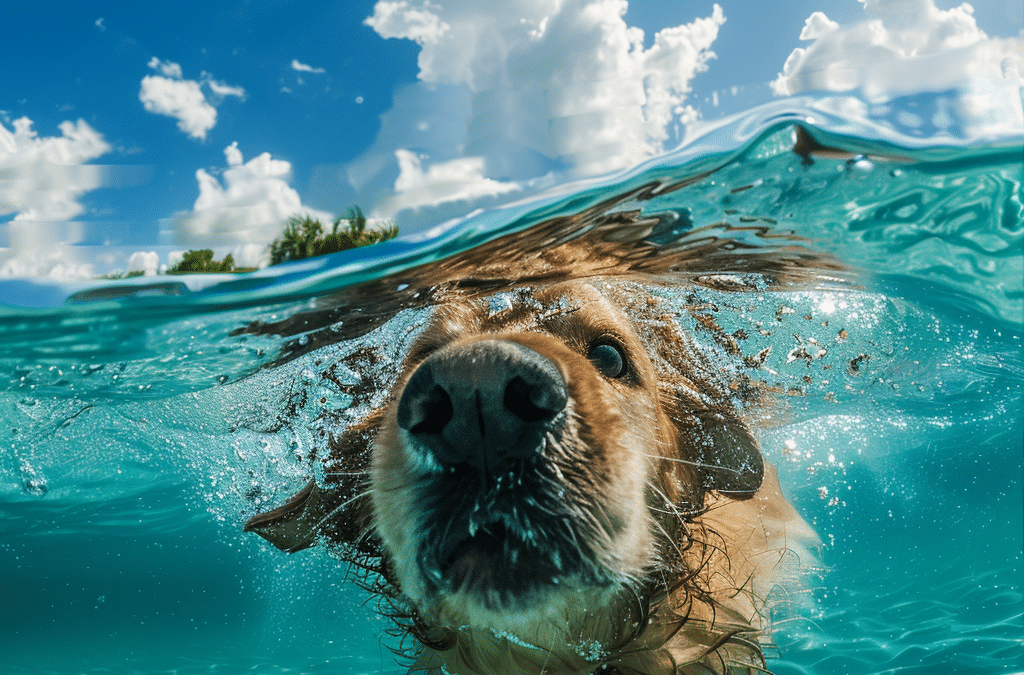How to Teach a Dog to Swim: A Step-by-Step Guide for Pet Owners
Teaching your dog to swim can be a rewarding experience for both you and your furry friend. Not all dogs are natural swimmers, so it’s essential to approach the process with patience and care.
Before introducing your dog to the water, it’s important to consider their breed, age, and health to ensure swimming is safe. Starting in shallow, calm water can help your dog become comfortable and build confidence gradually.
Safety is paramount, so equip your dog with a life vest, and never leave them unattended near water. Encourage your dog by using a positive tone and treats, making the experience enjoyable.
If your dog is hesitant, lead by example; get into the water with them to show that it’s safe. It’s beneficial to keep the initial sessions short to prevent your dog from becoming overwhelmed or overtired.
As your dog grows more adept in the water, you can introduce toys and play fetch to make swimming more exciting and engaging. Remember, some dogs may take to the water quickly, while others may need more time and encouragement.
Be patient and consistent with your training, and always prioritize your dog’s comfort and well-being.
Understanding Your Dog’s Swimming Ability

Before introducing your dog to the water, it’s important to understand that each dog’s ability to swim varies. Factors such as breed-specific traits, health and fitness, as well as a dog’s natural inclination toward water, play significant roles.
Assessing Breed Specific Traits
When evaluating your dog’s potential for swimming, consider their breed characteristics. Labrador Retrievers and Portuguese Water Dogs, for instance, are known for their strong swimming abilities due to their historical roles that involved working in water.
On the other hand, breeds like Bulldogs, Pugs, and Basset Hounds may struggle due to their body structure. These breeds, particularly brachycephalic breeds, with short legs and snouts, often face challenges with swimming.
Considering Health and Fitness Levels
Your dog’s health and fitness are crucial in determining their swimming skills. Consult with your vet to ensure that your pet is in good physical condition to swim.
Certain health conditions or issues related to age may limit their ability to swim safely.
Recognizing Natural Swimmers
Some dogs exhibit a natural propensity for swimming, often evident in how they respond to water. Natural swimmers generally show enthusiasm when near water and may instinctively paddle when they find themselves in water.
Typically, dog breeds known for their working roles near water will likely be natural swimmers. However, even if your dog belongs to a breed with strong swimming traits, it’s crucial to introduce them to water gradually and monitor their comfort levels.
Preparing for the First Swim

Before you begin teaching your dog to swim, it’s essential to have the right equipment on hand and understand the necessary safety precautions. A positive first experience with water can set the tone for future swimming sessions.
Choosing the Right Equipment
Selecting a dog life vest is crucial for safety and buoyancy, especially if your dog is new to swimming. Ensure the vest fits snugly yet comfortably, allowing for a full range of motion.
For initial lessons, choose a controlled environment like a kiddie pool or shallow part of a lake, where you can easily manage your dog’s exposure to water. Have a leash ready to guide your dog, and bring along a favorite toy to create a positive association with water.
Safety Measures and Precautions
Always start in shallow water where your dog can touch the bottom. Be vigilant about water safety, including monitoring for signs of fatigue or distress.
Ensure the water is free from strong currents, deep holes, and dangerous debris.
Be aware of pool chemicals in pools that can irritate your dog’s skin, and have fresh water available to prevent your dog from drinking chlorinated or salt water.
Gather materials like a towel and dog-specific sunscreen, if the swimming area is exposed to strong sun.
Introducing Your Dog to Water
Begin by encouraging your dog to explore the water at their own pace, using positive reinforcement.
If you’re using a kiddie pool, fill it with a small amount of water and let your dog step in and out freely. In natural settings like lakes or the ocean, keep your dog on a leash for better control as they acclimate.
Remember to praise your dog and offer treats for their bravery. Incorporate their favorite toy to create a playful and stress-free environment.
Training Techniques for Dog Swimming

Teaching your dog to swim requires patience, practice, and the use of positive reinforcement techniques.
Ensure you have access to a safe body of water and equipment like a dog life vest, to begin the swimming lessons.
Step-by-Step Swimming Lessons
With every dog swim lesson, start shallow and gradually increase depth. Your initial steps should include getting your dog comfortable with water; start at the edge of a pool or lake and encourage your dog to wet their paws.
Gradually lead them to stand in water just deep enough to reach their belly. For breeds like retrievers that have a natural affinity for water, they may advance through these steps quickly, but always go at your dog’s pace.
- Step 1: Let your dog explore the water at their own comfort level.
- Step 2: Incrementally increase water depth as they show confidence.
- Step 3: Support your dog’s body as they begin to paddle and swim.
Incorporating Play and Positive Reinforcement
Make swim training fun by incorporating your dog’s favorite ball or toy to fetch in the water. This encourages your dog to see swimming as a playful and rewarding workout.
Positive reinforcement is crucial; offer praise and treats for every successful step taken.
This approach not only solidifies your dog’s newly learned skills but also helps to build a trusting and joyful bond between you and your pet as you train together.
- Playtime: Use toys to create a fun experience.
- Treats: Give your dog rewards to encourage progress.
Monitoring and Adjusting the Learning Process
Throughout the dog swimming lessons, keep a keen eye on your dog’s comfort and energy levels, ensuring they have breaks and access to drinking water.
Noticing signs of stress or fatigue is essential, as you should end the session before your dog becomes overwhelmed.
Track your dog’s progress and adjust the training pace accordingly, understanding that each dog learns at their own speed. By doing so, you maintain a safe and enjoyable learning environment.
- Monitor: Watch for signs of fatigue or stress.
- Adjust: Tailor the pace of the lessons to your dog’s needs.
Each training session builds the foundation for a lifetime of safe and enjoyable time in the water for you and your dog.
Post-Swim Care and Observation

After your dog has enjoyed a swim in a pond, creek, or any body of water, it’s essential to provide proper care to ensure their well-being.
This includes looking out for water-related health issues and maintaining their comfort and hygiene.
Dealing with Water-Related Health Issues
- Hypothermia: Even if the swim seemed enjoyable, be mindful of air temperature conditions post-swim. If it’s particularly cold, hypothermia can be a risk. Dry your dog thoroughly with a towel and keep them warm to prevent the onset of hypothermia.
- Algae: Be sure to rinse your dog with fresh water if they’ve been swimming in water with visible algae to avoid irritation or poisoning.
- Limber Tail: Often seen in dogs that are not used to swimming or have overworked themselves, limber tail results from tiring out the muscles used to doggy paddle. Resting and a pet first-aid kit for any inflammation or pain relief are beneficial.
Maintaining Your Dog’s Comfort and Hygiene
- Sunscreen: Apply dog sunscreen especially if your dog has a short coat or you notice their skin is getting too much sun exposure.
- Hygiene: Ensure you’ve cleaned not just their coat, but also their paws. Consider using dog booties if you had an adventurous day to protect any sensitive or sore pads.
- Tiring Out: Monitor your dog for signs of exhaustion after vigorous swimming, especially dogs with short legs which may exert themselves more in the water. Rest is crucial after a swim.
Your Ultimate Pet First Aid Checklist
Be Prepared, Stay Calm, and Keep Your Pet Safe
Emergencies can happen when we least expect them, and being prepared can make all the difference. This comprehensive Pet First Aid Checklist is designed to equip you with the knowledge and tools you need to respond quickly and effectively.
Download your checklist now and gain peace of mind knowing you're ready to handle any pet emergency with confidence.





Recent Comments